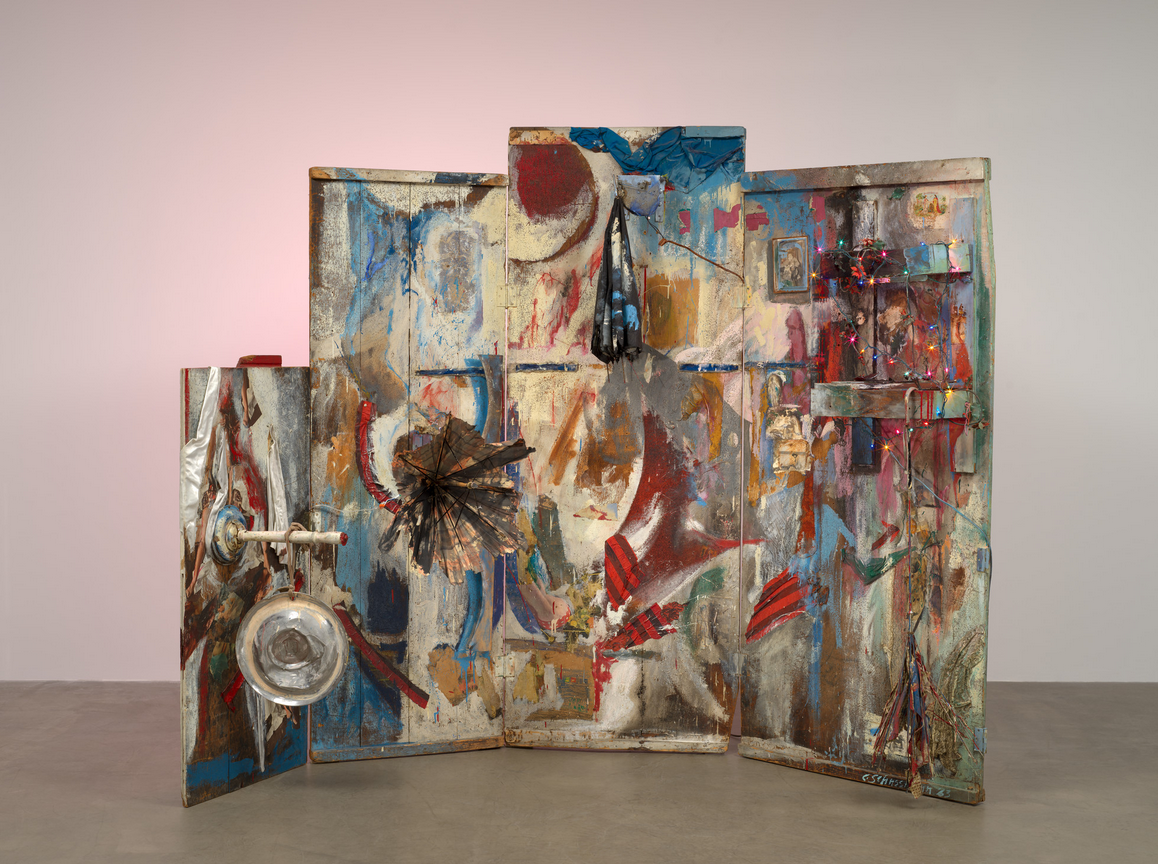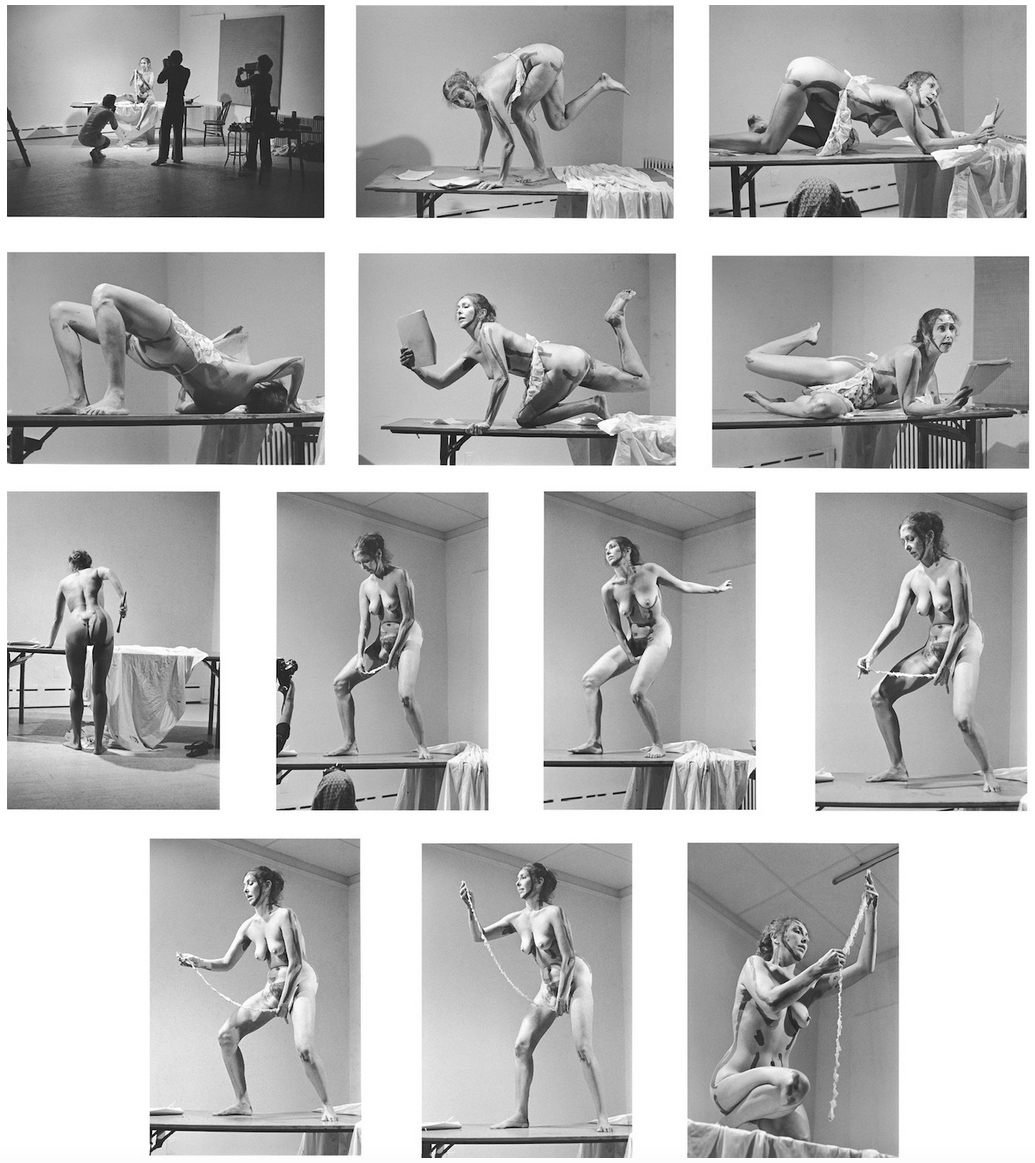
It’s hard to comprehend, but THIS WORK became the motive of the FIRST Eyeopener in the history of Eyeopener … Yes, there was a day when the first Eyeopener was created, and there were times when Eyeopener was not there. We can probably talk about a certain era: PCD – before Eyeopener and PCD, i.e. after Eyeopener … although no, it probably makes no sense … maybe WCCD, i.e. in the times of Eyeopener …
Anyways …
The title of this work refers to the place where the object was created in the artist’s studio, located in a former fur workshop. In Manhattan. Schneemann is one of the most important female artists of feminist art, using many painting and sculptural techniques, but most of all her own body, especially her vagina … as an object of experiment and a sculptural form. This object served Schneemann as a stage valve. In front of it, she danced and photographed herself painted with paint. To create the work, she used boards, paint, umbrellas, light bulbs,
photography, textiles, stockings, nails, hinges and more.
Carolee Schneemann was one of the first artists to explore sexuality through a performance art, advocating a firm and shameless approach to the often stigmatized topic of female sexuality. Her 1964 show Meat Joy was full of sexual innuendo: a group of men and women danced, rolled on the floor, painted each other and played with sausages, fish and raw chicken. Everything was wild, chaotic, and witty, all at the same time undermining the dogma of female restraint. In the performance “Interior Scroll”, which she made twelve years later, she stood naked on the table reading a transcript of her movie “Kitch’s Last Meal” from a roll of paper that she unwrapped by first pulling it out of its vagina. The text was a conversation based on artistic concepts traditionally associated with women, such as intuition and bodily processes, against the background of notions of order and rationality that are usually viewed as masculine. By rooting the artistic discourse in her own vagina (literally), she made the naked female body a source of artistic creation, not a projection space for male desire.
The choice of Schneemann as the artist starting the Daily People series is not accidental. It is a conscious choice and decision: feminist art is the main thread of the art we present, the most interesting area. The women of the 1960s had an extremely difficult hurdle to overcome. In their time, after all, no one doubted that women could “paint nicely” or “embroider beautifully”. However, it was doubted – and this is a systemic doubt – that they had anything significant to say. It was the domain of men. It is so today.
